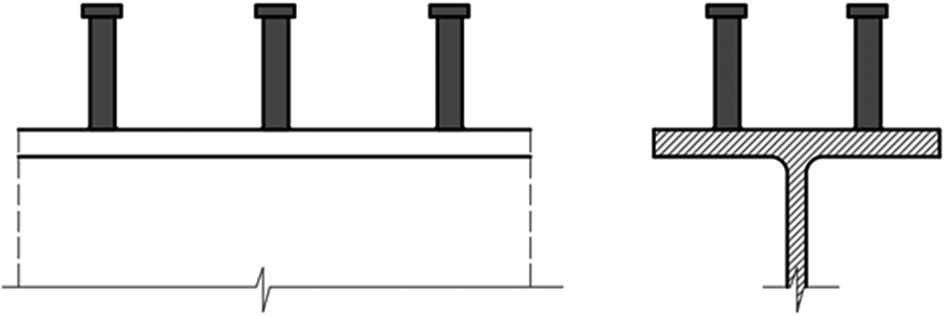Random shear resistance of a headed-stud connector in composite steel-concrete beam
1
Institute of Technical Engineering, State University Applied Sciences in Jaroslaw, Poland
2
Katedra Konstrukcji Mostowych, Metalowych i Drewnianych, Wydział Inżynierii Lądowej, Politechnika Krakowska, Poland
These authors had equal contribution to this work
Submission date: 2023-11-21
Acceptance date: 2023-12-05
Publication date: 2024-12-04
Corresponding author
Mariusz Maślak
Katedra Konstrukcji Mostowych, Metalowych i Drewnianych, Wydział Inżynierii Lądowej, Politechnika Krakowska, Warszawska 24, 31-155, Kraków, Poland
Katedra Konstrukcji Mostowych, Metalowych i Drewnianych, Wydział Inżynierii Lądowej, Politechnika Krakowska, Warszawska 24, 31-155, Kraków, Poland
Archives of Civil Engineering 2024;70(4):425-439
KEYWORDS
design valueheaded-stud connectorprobability-based designshear resistancesteel-concrete composite connection
TOPICS
ABSTRACT
In the traditional, standard, computational approach, the shear resistance of a single headed-stud connector, ensuring the composite connection between a steel beam and a reinforced concrete slab resting on this beam, is determined by comparing the load capacity - determined by the destruction of the steel connector itself, and the load capacity - conditioned by the destruction of the concrete surrounding this connector. In a single implementation, the smaller of these both values, i.e. , is authoritative for the designer. If, however, both combined strengths are treated as the random variables and a statistically homogeneous sample grouping potentially possible implementations of this type is taken into account, then the design resistance , representative for the verification of ultimate limit state for the considered connection, will be quantitatively different from the value recommended for use in this regard in the standard EN 1994-1-1. In this paper a detailed algorithm for the correct specification of this value is presented in detail. The dependence of such value on the mutual relationship between the coefficients determining the statistical variability of the strength of the connector steel as well as the strength of the concrete from which the floor slab was made is also demonstrated. The proposed approach is based on the fully probabilistic design format, according to which the appropriate level of the probability of reliable work of the analyzed connection is ensured.
We process personal data collected when visiting the website. The function of obtaining information about users and their behavior is carried out by voluntarily entered information in forms and saving cookies in end devices. Data, including cookies, are used to provide services, improve the user experience and to analyze the traffic in accordance with the Privacy policy. Data are also collected and processed by Google Analytics tool (more).
You can change cookies settings in your browser. Restricted use of cookies in the browser configuration may affect some functionalities of the website.
You can change cookies settings in your browser. Restricted use of cookies in the browser configuration may affect some functionalities of the website.




